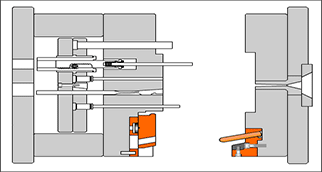
Shanghai Henglian Industrial Co., Ltd.
Injection Molding & CNC Machining & 3D PrintingKnowledge
What materials is suited for injection molding process
Most polymers, sometimes referred to as resins, may be used, including all thermoplastics, some thermosets, and some elastomers. Available materials include alloys or blends of previously developed materials, so product designers can choose the material with the best set of properties from a vast selection. Major criteria for selection…
When is the injection molding developed in history
In 1872, American inventor John Wesley Hyatt, together with his brother Isaiah, patented the first injection moulding machine. in 1903, The German chemists Arthur Eichengrün and Theodore Becker invented the first soluble forms of cellulose acetate. In 1939, Arthur Eichengrün patented the injection moulding of plasticised cellulose acetate. In…
How is the injection molding processed
Injection moulding uses a ram or screw-type plunger to force molten plastic material into a mould cavity; this solidifies into a shape that has conformed to the contour of the mould. It is most commonly used to process both thermoplastic and thermosetting polymers, with the volume used of the…
Where is the injection molding applied
Injection moulding is used to create many things such as wire spools, packaging, bottle caps, automotive parts and components, toys, pocket combs, some musical instruments (and parts of them), one-piece chairs and small tables, storage containers, mechanical parts (including gears), and most other plastic products available today. Injection moulding…
What`s the injection molding
Injection moulding (Also spelling: injection molding) is a manufacturing process for producing parts by injecting molten material into a mould, or mold. Injection moulding can be performed with a host of materials mainly including metals (for which the process is called die-casting), glasses, elastomers, confections, and most commonly thermoplastic and thermosetting polymers. Material for the part is fed into a heated barrel, mixed…





